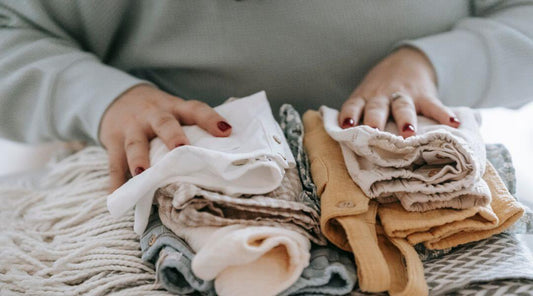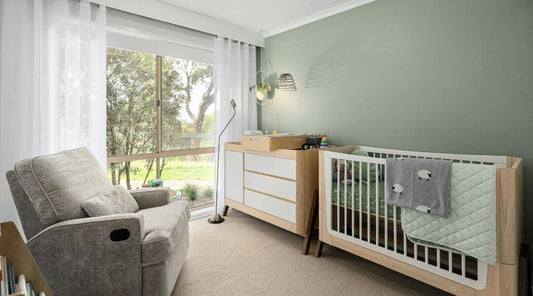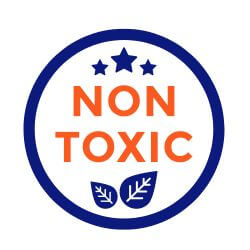Creating an organic nursery is more than just a trendy style choice; it’s an investment in your baby’s health and well-being. With eco-friendly materials and safe products, you can craft a serene and nurturing environment. This guide offers 20 helpful tips to help you set up an organic nursery that’s both functional and beautiful, focusing on aspects like a nursery dresser changing table, sustainable materials, and more.
Choose Natural Materials
Your baby will spend a lot of time in their nursery, so it's essential to select furniture made from natural materials. Opt for sustainably sourced wood or bamboo for a nursery dresser changing table and other furnishings. These materials not only reduce your carbon footprint but also avoid harmful chemicals often found in synthetic products.
Furniture Safety Standards
When selecting pieces for your nursery, consider furniture that meets safety standards. Look for certifications that guarantee the absence of volatile organic compounds (VOCs) and other harmful toxins. A nursery dresser changing table made from certified materials ensures your baby's environment is free of hazardous chemicals.
Opt for Non-Toxic Paints
Renovating your nursery? Choose low-VOC or no-VOC paints for a healthier atmosphere. Bright colors can invigorate a space, but toxic paints can compromise indoor air quality. Non-toxic alternatives are available and just as vibrant, making it easier to create a cheerful yet safe haven for your little one.
Focus on Natural Fabrics
Textiles used in your nursery, like bedding and curtains, should also be organic. Cotton, linen, and wool options are excellent choices. They are hypoallergenic, breathable, and gentle against baby's sensitive skin. Ensure these fabrics are dyed with natural colors to further reduce exposure to chemicals.
Check Certifications
Before purchasing textiles, check for certifications like GOTS (Global Organic Textile Standard) or OEKO-TEX. Products that bear these labels have undergone rigorous testing, ensuring they are free from harmful substances, giving you peace of mind when setting up your organic nursery.
Create a Calm Color Palette
The colors you choose can significantly impact your baby's mood and sleep patterns. Soft, muted tones like pastels and earth colors promote a calming environment. When selecting a nursery dresser changing table, look for colors that complement your chosen palette to create a cohesive and soothing atmosphere.
Incorporate Houseplants
Plants purify the air and add natural beauty to your nursery. Opt for non-toxic varieties like spider plants or peace lilies. Make sure to research which plants are safe for babies and keep them out of reach. A few well-placed plants can liven up the space and contribute to an organic aesthetic.
Utilize Multi-Functional Furniture

Furniture that serves multiple purposes is a smart choice for any nursery. A nursery dresser changing table can double as storage for clothes, diapers, and baby essentials. This approach not only saves space but also ensures that everything you need is close at hand, reducing clutter and enhancing organization.
Consider Convertible Options
Convertible furniture pieces, like cribs that transform into toddler beds, can grow with your child. This type of furniture is typically built with durable materials and is designed to last, further supporting your goal of an organic nursery that’s both stylish and functional.
Plan for Lighting
Proper lighting can influence your baby’s sleep and overall mood in the nursery. Install soft lighting such as dimmable lamps or LED nightlights, which provide gentle illumination during nighttime feedings or diaper changes. Consider blackout curtains to help create a dark environment conducive to sleep.
Create Cozy Zones
Design small cozy areas for reading or bonding with your baby. Floor cushions or bean bags can offer plush seating, while a soft area rug adds warmth. Your nursery dresser changing table can also be positioned strategically to facilitate transitions between play and rest.
Organize with Baskets
Storage is crucial in any nursery, so utilize natural-woven baskets to store toys and essentials. Not only do they add an organic touch, but they keep everything organized and accessible. Labels can help you quickly locate items, making life easier during those busy diaper changes.
Prioritize Air Quality
Good air quality is essential for a baby’s health. Ensure regular ventilation by opening windows when possible, and consider investing in an air purifier designed for nurseries. This will help remove allergens, dust, and airborne toxins, creating a fresh atmosphere in your organic nursery.
Reduce Clutter
An organized space also involves minimizing clutter. Evaluate what items you truly need in the nursery and consider donating or storing things that are not essential. A cleaner environment leads to reduced stress levels and allows both you and your baby to relax more.
Choose Natural Cleaning Products
Cleaning your organic nursery requires careful consideration. Choose eco-friendly, non-toxic cleaning products to ensure that harmful chemicals do not compromise your baby’s space. Simple ingredients like vinegar and baking soda can be effective and safe options for maintaining cleanliness without adverse effects.
Maintain a Schedule
Develop a routine for your baby that incorporates time for play, sleep, and nourishment. Establishing a predictable schedule can help your baby feel secure, creating a calmer atmosphere for everyone in the nursery. Use a nursery dresser changing table as part of this routine to streamline diaper changes efficiently.
Engage with Nature
Incorporate elements of nature into your nursery. Natural light, soft textures, and organic materials can all contribute to a soothing atmosphere. Consider handmade objects from local artisans or nature-inspired décor to enhance the organic theme. Engaging with nature is not only beautiful but benefits your baby's growth and development.
Encourage Creativity
Organize a small art corner using non-toxic art supplies as your baby grows. Creativity can stimulate cognitive development, and having designated spaces for arts and crafts encourages exploration and imagination. Protect your nursery dresser changing table with a soft mat to ensure easy cleanup after creative sessions.
Create a Family Gallery
Frame family photographs and artwork to create an affectionate gallery on the walls. This personal touch fosters an emotional connection, making the nursery feel warm and welcoming. Choose frames made from sustainable materials to align with your organic theme.
Incorporate Music
Introduce gentle, calming music into the nursery. Incorporating sound can significantly influence your baby's mood and help with sleep. Use speakers that have no harmful emissions and are made from eco-friendly materials to stay true to your organic nursery setup.
Maintain Flexibility
As your baby grows, their needs will change. Remain flexible in your approach to decorating and arranging your organic nursery. Be willing to adjust layouts, furniture arrangements, and décor as your child’s preferences and requirements evolve.
Personalize the Space
Finally, allow your personal style and preferences to shine through in your nursery. Incorporate unique touches that represent your family's identity and values. Remember, your nursery should be a space where you feel comfortable and happy, nurturing your bond with your bundle of joy.
Your Eco-Friendly Journey Begins!
Setting up an organic nursery is about making choices that reflect a commitment to health, sustainability, and well-being. By following these 20 tips, you can create a beautiful and functional space, emphasizing the importance of an eco-friendly lifestyle. From selecting a nursery dresser changing table to choosing furniture made from natural materials, your efforts in crafting an organic haven will resonate through your child’s life. Embrace the joy of nurturing a healthy space; your little one will thank you for it!








